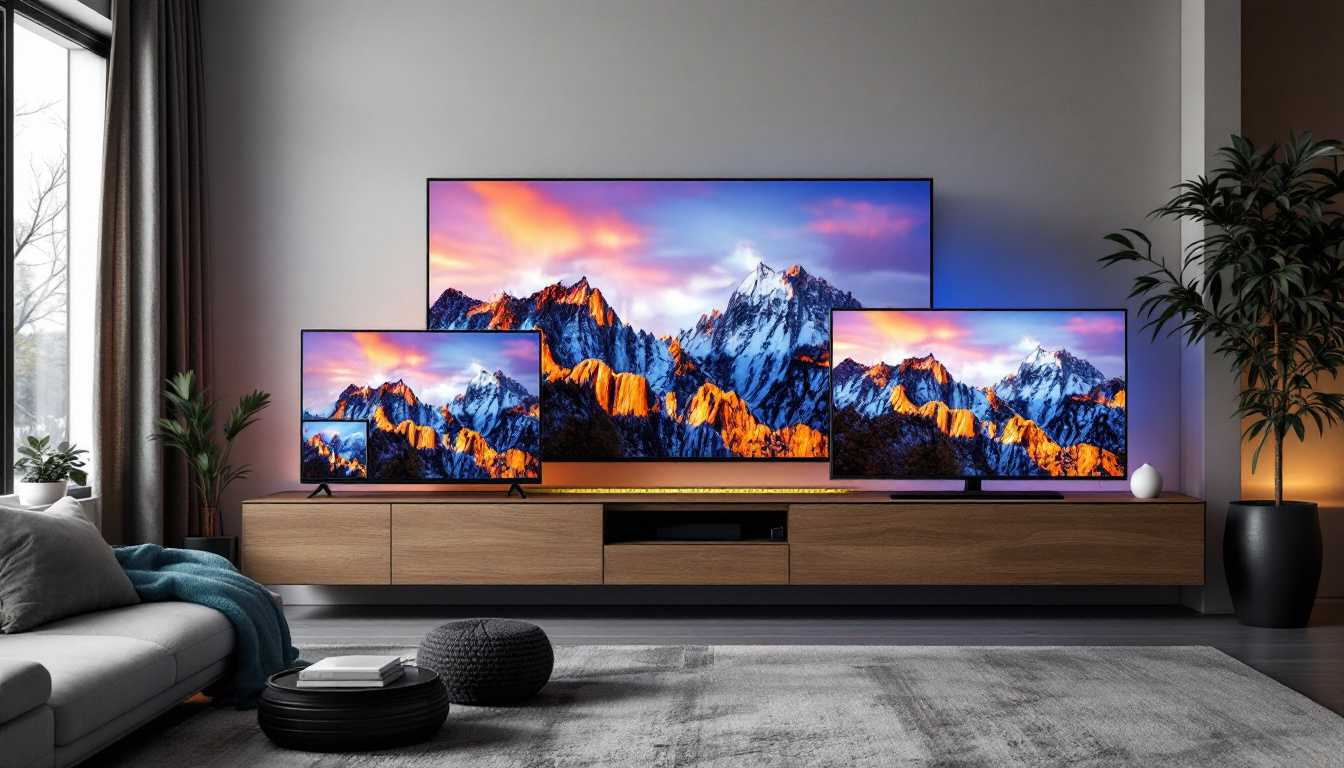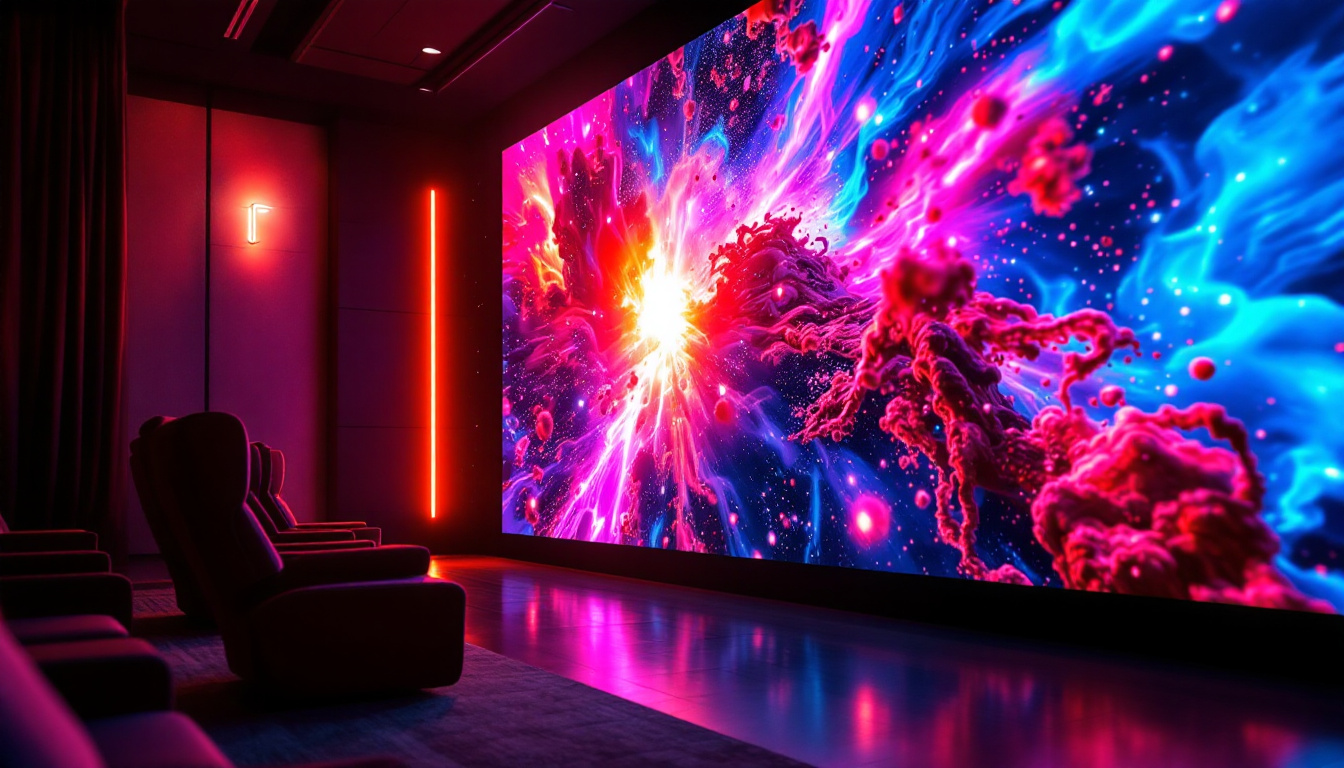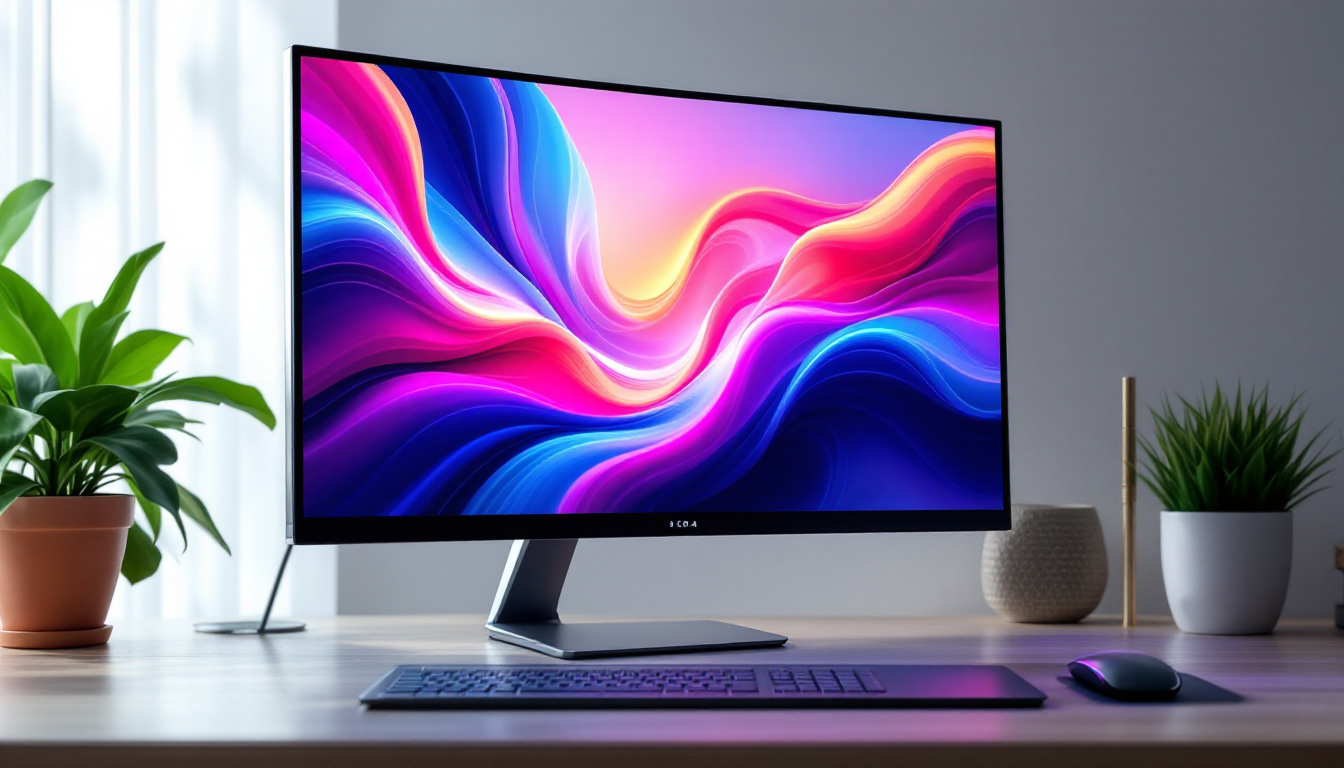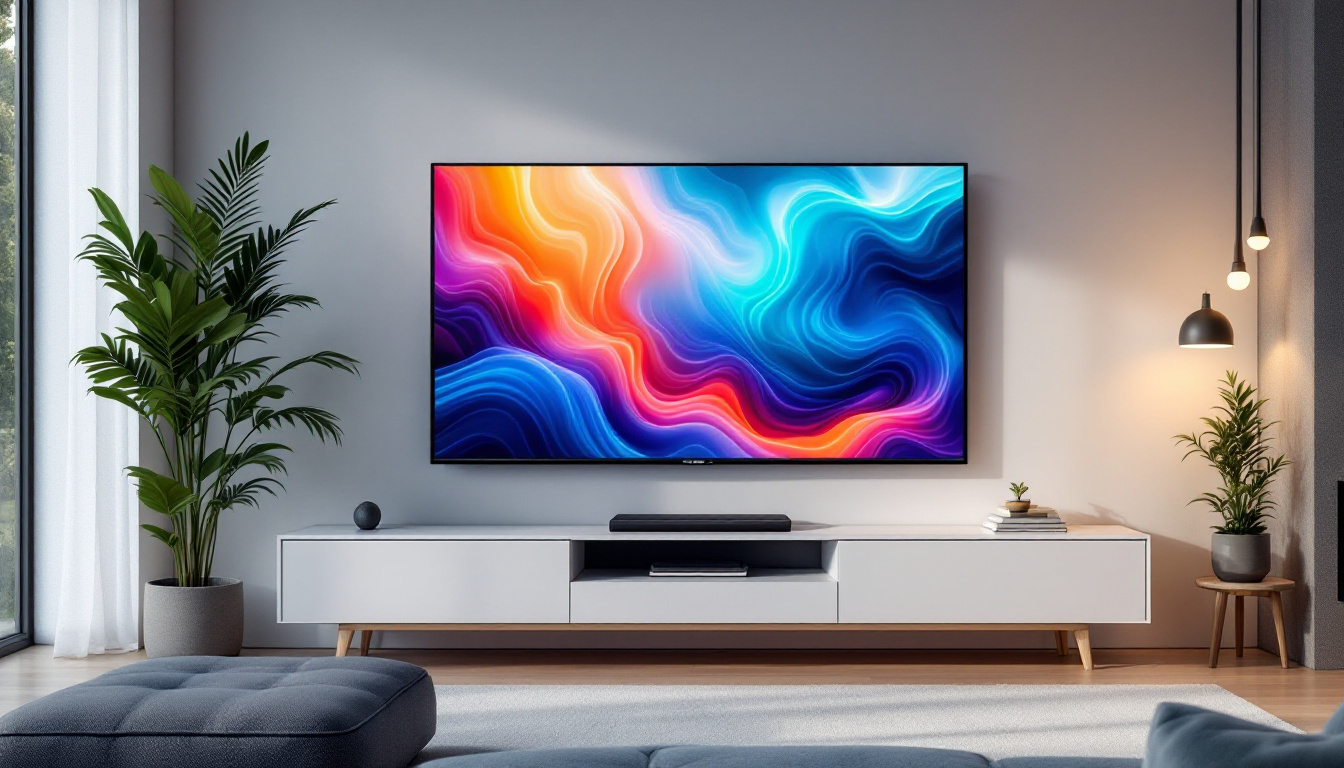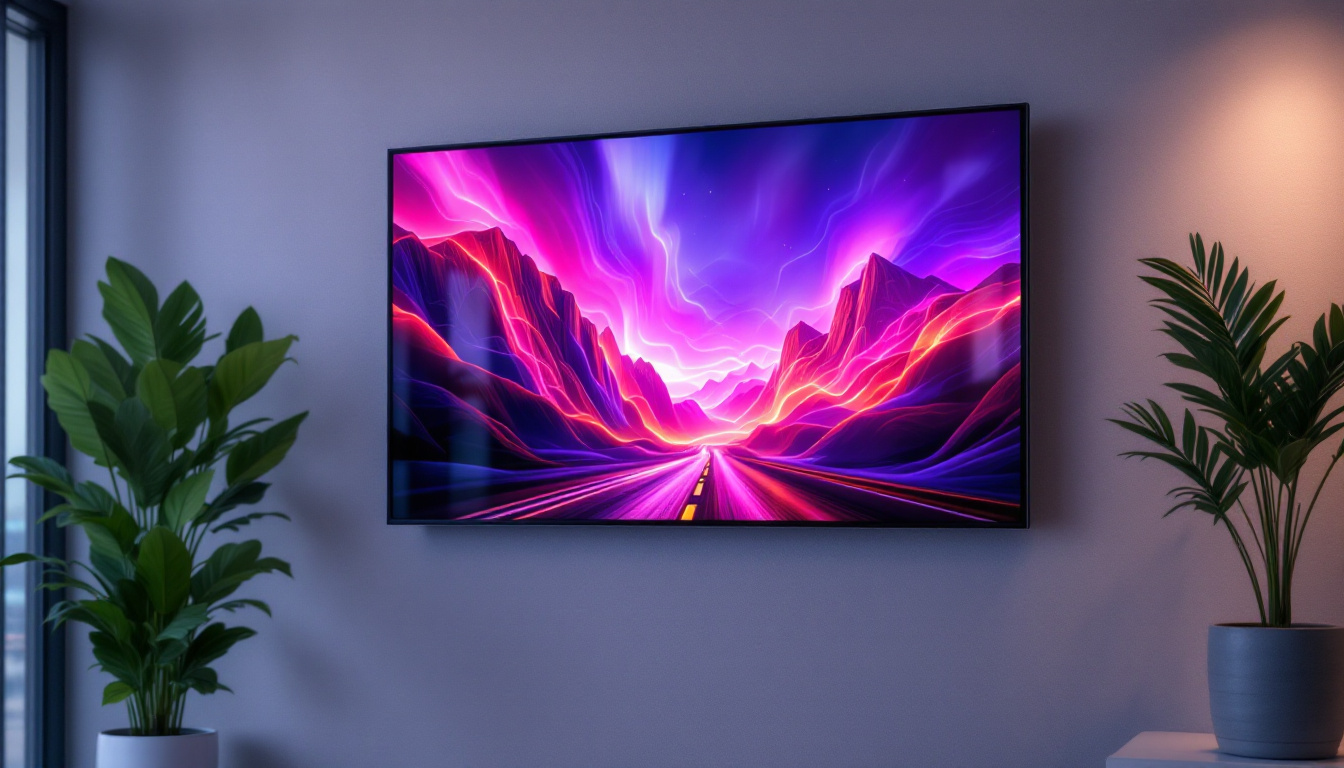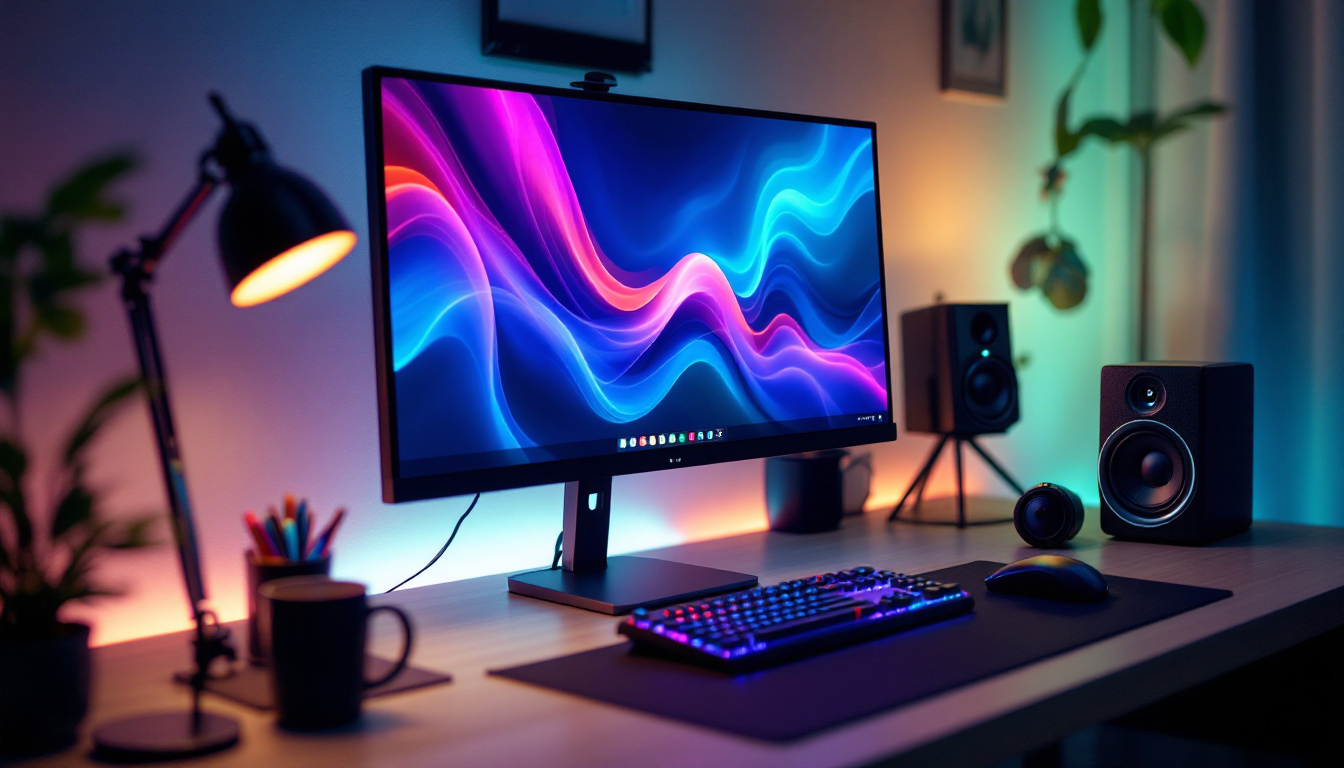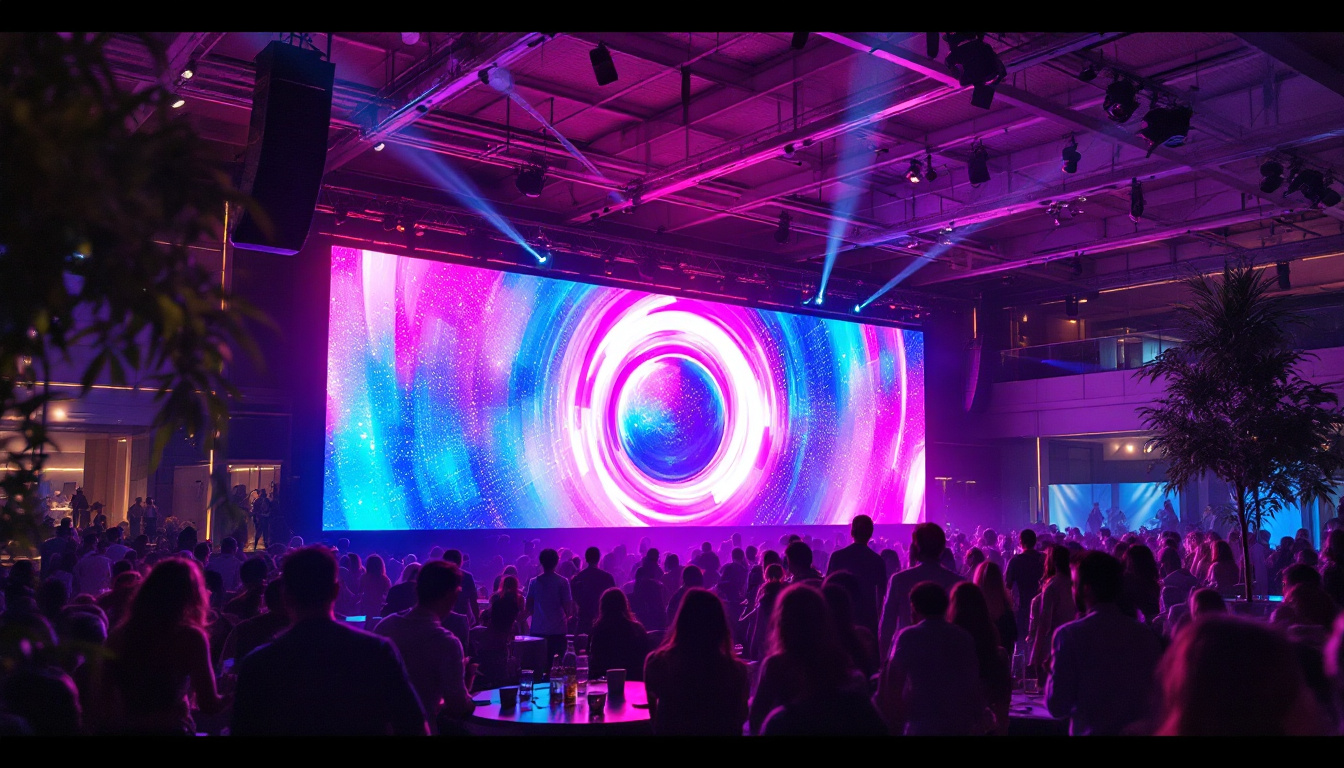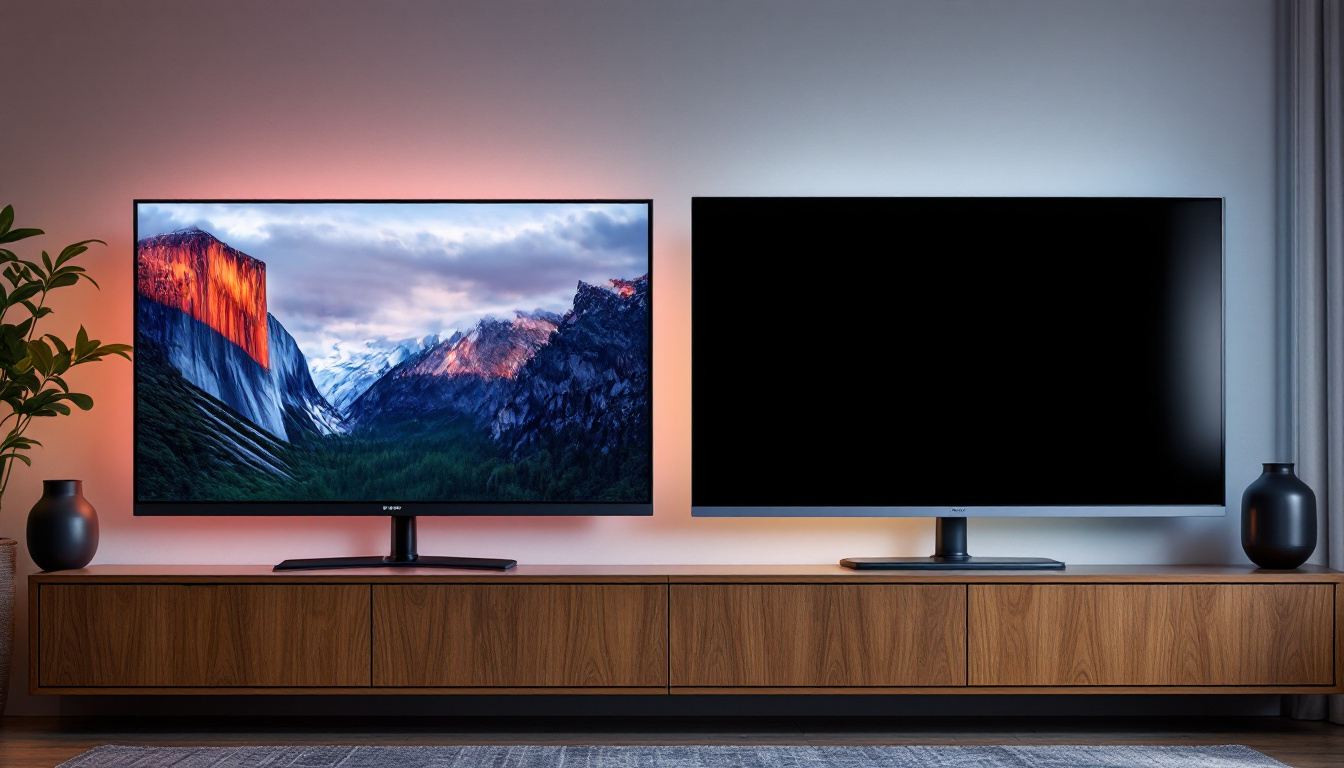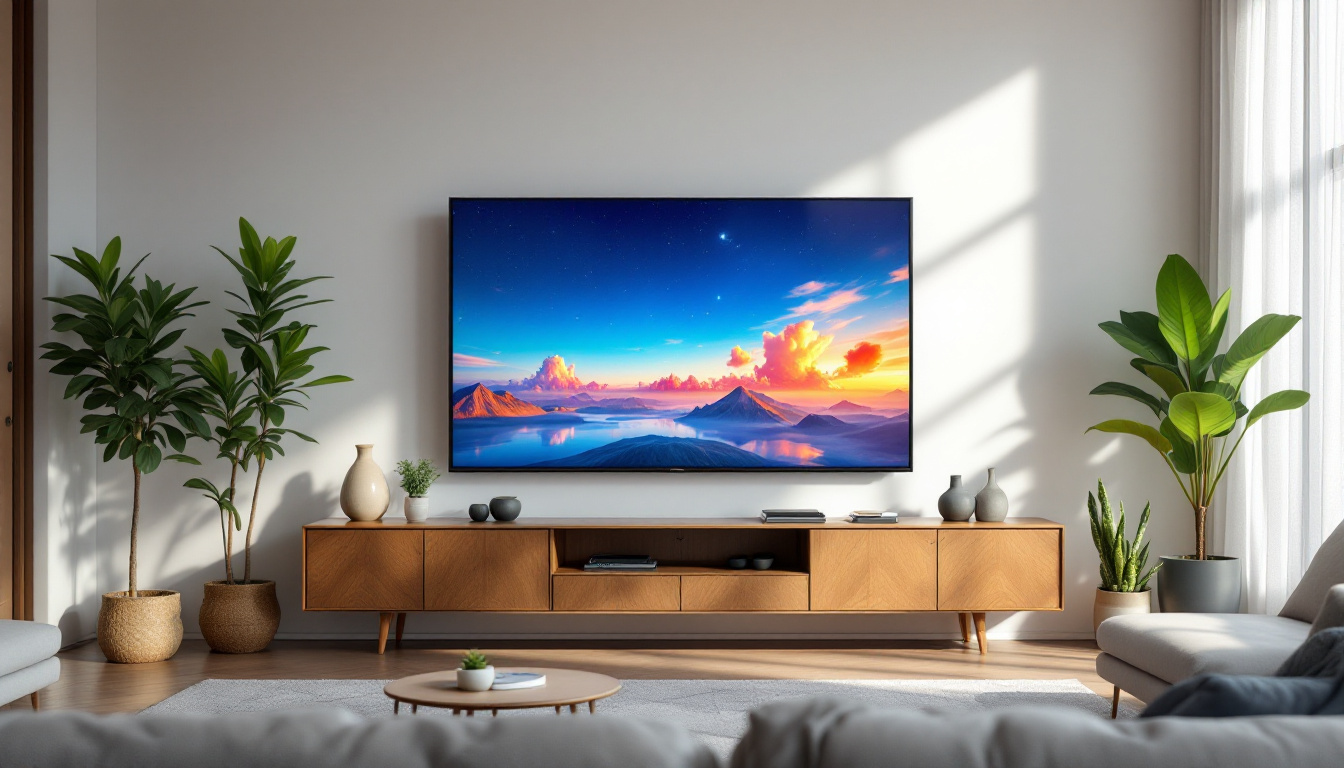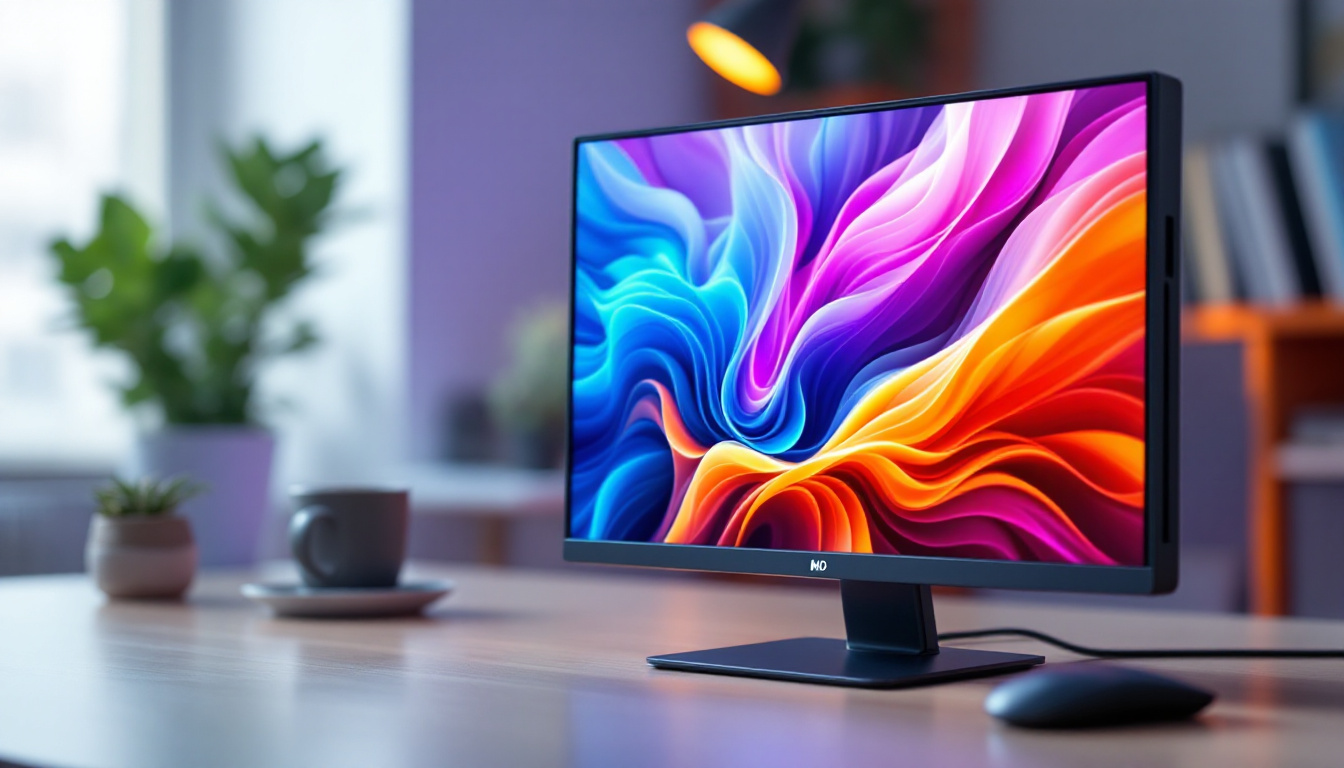In the world of home entertainment, the choice of television can be overwhelming. With a myriad of options available, understanding the specifications, particularly the diagonal sizes of LED displays, is crucial for making an informed decision. This article delves into the significance of TV diagonal sizes, how they are measured, and what to consider when selecting the perfect television for your space.
Understanding TV Diagonal Sizes
The diagonal size of a television is one of the most important specifications to consider when purchasing a new TV. It is typically measured in inches from one corner of the screen to the opposite corner. This measurement provides a straightforward way to compare the size of different TVs, but it can sometimes be misleading if not understood in context.
Why Diagonal Measurement Matters
Diagonal measurement is essential because it gives consumers a quick reference point for the screen size. However, it does not account for the actual viewing area, which can vary significantly between models due to differences in bezel size and screen shape. A larger diagonal size does not always equate to a better viewing experience, especially in smaller rooms. For example, a TV with a slim bezel may offer a larger screen area compared to a model with a thicker frame, even if both have the same diagonal measurement. This discrepancy can lead to confusion when trying to determine which TV will provide the best experience for your space.
Common Sizes and Their Uses
TVs come in various diagonal sizes, typically ranging from 32 inches to over 85 inches. Each size serves different purposes and fits different room sizes. For instance, a 32-inch TV is ideal for a small bedroom or kitchen, while a 55-inch or larger model is better suited for a spacious living room. Understanding the common sizes can help consumers choose a model that fits their lifestyle and viewing habits. Moreover, it’s worth noting that the distance from which you plan to watch the TV plays a crucial role in determining the ideal size. As a general rule, viewers should sit at a distance of about 1.5 to 2.5 times the diagonal size of the TV for optimal viewing comfort. This means that a 55-inch TV is best viewed from about 6.5 to 11.5 feet away, ensuring that you get the most immersive experience without straining your eyes.
In addition to the size and viewing distance, the resolution of the TV can also influence your choice. For instance, a 4K Ultra HD TV allows for a larger screen size without sacrificing picture quality, making it a popular choice for home theaters. With the increasing availability of high-definition content, having a TV that can display this level of detail can significantly enhance your viewing experience. As technology continues to evolve, consumers are faced with a wider array of options, making it essential to consider not just the diagonal size, but also how it fits into your overall entertainment setup and viewing preferences.
How to Measure TV Diagonal Size
Measuring a TV’s diagonal size is a straightforward process, but it is essential to do it correctly to ensure accurate comparisons. The measurement is taken from the bottom left corner of the screen to the top right corner. It is important to note that this measurement only accounts for the screen itself, excluding any bezels or frames. By focusing solely on the screen size, you can make informed decisions when comparing different models, ensuring that you choose the right fit for your viewing environment.
Tools Needed for Measurement
To measure a TV’s diagonal size, one does not need any specialized tools. A simple measuring tape will suffice. Ensure the TV is placed on a flat surface, and make sure to measure from the screen’s edge to get an accurate reading. This method can be used for both existing TVs and when considering new purchases. Additionally, if you want to ensure precision, you might consider using a laser distance measurer, which can provide a quick and accurate reading without the hassle of holding a tape measure in place. This is particularly useful for larger TVs where reaching the corners might be cumbersome.
Understanding Aspect Ratios
Aspect ratio is another critical factor to consider when discussing TV sizes. The most common aspect ratio for modern televisions is 16:9, which means the screen is 16 units wide for every 9 units of height. Understanding the aspect ratio helps consumers visualize how the TV will fit in their space and how it will display various types of content, from movies to video games. For instance, a 16:9 aspect ratio is ideal for widescreen movies and most television broadcasts, while other ratios, such as 4:3, may be more suitable for older content or specific applications. Additionally, with the rise of ultra-wide monitors and TVs, knowing how aspect ratios interact with your media can enhance your viewing experience, ensuring that you enjoy content as it was intended to be seen.
Choosing the Right Size for Your Space
Selecting the right TV size involves more than just choosing the largest model available. It requires careful consideration of the room’s dimensions, viewing distance, and the intended use of the TV. A well-sized TV can enhance the viewing experience, while an improperly sized one can lead to discomfort and dissatisfaction.
Calculating Viewing Distance
The optimal viewing distance varies depending on the size of the TV. A common guideline suggests that the distance from the screen should be approximately 1.5 to 2.5 times the diagonal size of the TV. For example, for a 55-inch TV, the ideal viewing distance would be between 6.8 feet and 11.5 feet. This distance ensures that viewers can appreciate high-definition content without straining their eyes.
Room Size Considerations
The size of the room plays a significant role in determining the appropriate TV size. In smaller rooms, a large TV can overwhelm the space and make it uncomfortable for viewers. Conversely, in larger rooms, a smaller TV may appear insignificant and fail to deliver an immersive experience. It is essential to balance the TV size with the room’s dimensions to create a harmonious environment.
LED Display Technology Overview
LED (Light Emitting Diode) technology has revolutionized the television industry, providing brighter images, better contrast, and improved energy efficiency compared to older technologies like LCD and plasma. Understanding how LED displays work can help consumers appreciate the benefits of this technology when selecting a TV.
How LED Displays Work
LED TVs use a backlighting system that consists of numerous tiny LEDs. These LEDs illuminate the screen and create the images that viewers see. There are two primary types of LED displays: edge-lit and full-array. Edge-lit displays have LEDs positioned around the edges of the screen, while full-array displays have a grid of LEDs behind the entire screen, allowing for better contrast and more uniform brightness.
Benefits of LED Technology
One of the main advantages of LED technology is its energy efficiency. LED TVs consume less power than traditional LCDs, making them a more environmentally friendly option. Additionally, LED displays offer superior brightness and color accuracy, providing a more vibrant viewing experience. This makes them particularly appealing for watching movies, playing video games, or enjoying sports.
Comparing LED with Other Display Technologies
While LED technology is prevalent in modern televisions, it is essential to compare it with other display technologies to understand its advantages and disadvantages. The two most common alternatives are OLED (Organic Light Emitting Diode) and QLED (Quantum Dot LED) displays.
OLED Technology
OLED technology is known for its ability to produce deep blacks and exceptional color contrast. Each pixel in an OLED display emits its own light, allowing for precise control over brightness and color. This results in stunning visuals, particularly in dark scenes. However, OLED TVs can be more expensive and may suffer from burn-in issues if static images are displayed for extended periods.
QLED Technology
QLED is a technology developed by certain manufacturers that uses quantum dots to enhance color and brightness. QLED TVs offer vibrant colors and high brightness levels, making them ideal for well-lit rooms. While they do not achieve the same black levels as OLED, they are generally more affordable and do not suffer from burn-in issues.
Future Trends in TV Diagonal Sizes and Technology
The television industry is continually evolving, with new technologies and trends emerging regularly. As consumer preferences shift, manufacturers are adapting by offering a broader range of sizes and features. Understanding these trends can help consumers stay informed about what to expect in the future.
Increasing Demand for Larger Screens
As home entertainment systems become more sophisticated, there is a growing demand for larger screens. Consumers are increasingly opting for TVs that exceed 70 inches, as larger screens provide a more immersive viewing experience. This trend is driven by the rise of 4K and 8K content, which benefits from larger displays that can showcase the increased resolution.
Advancements in Smart Technology
Alongside size, smart technology is becoming a standard feature in televisions. Modern TVs come equipped with built-in streaming services, voice control capabilities, and integration with smart home devices. As technology advances, consumers can expect even more innovative features that enhance the viewing experience and make TVs more versatile.
Conclusion
understanding TV diagonal sizes and LED display technology is essential for making an informed purchase decision. By considering factors such as room size, viewing distance, and the advantages of different display technologies, consumers can select a television that meets their needs and enhances their home entertainment experience. As the industry continues to evolve, staying informed about trends and advancements will ensure that consumers make choices that align with their preferences and lifestyle.
Explore LumenMatrix LED Display Solutions
Now that you have a deeper understanding of TV diagonal sizes and the nuances of LED display technology, take the next step in elevating your home entertainment or business communication with LumenMatrix. As a pioneer in the industry, LumenMatrix offers a diverse range of LED display modules designed to bring your visual experience to life. Whether you’re looking for an Indoor LED Wall Display for a captivating home theater setup, an Outdoor LED Wall Display to make a statement in public spaces, or any of our specialized solutions such as Vehicle, Sports, or Floor LED Displays, LumenMatrix has you covered. Embrace the future of visual engagement and check out LumenMatrix LED Display Solutions to discover how our cutting-edge technology can transform your space and message into an unforgettable visual journey.

